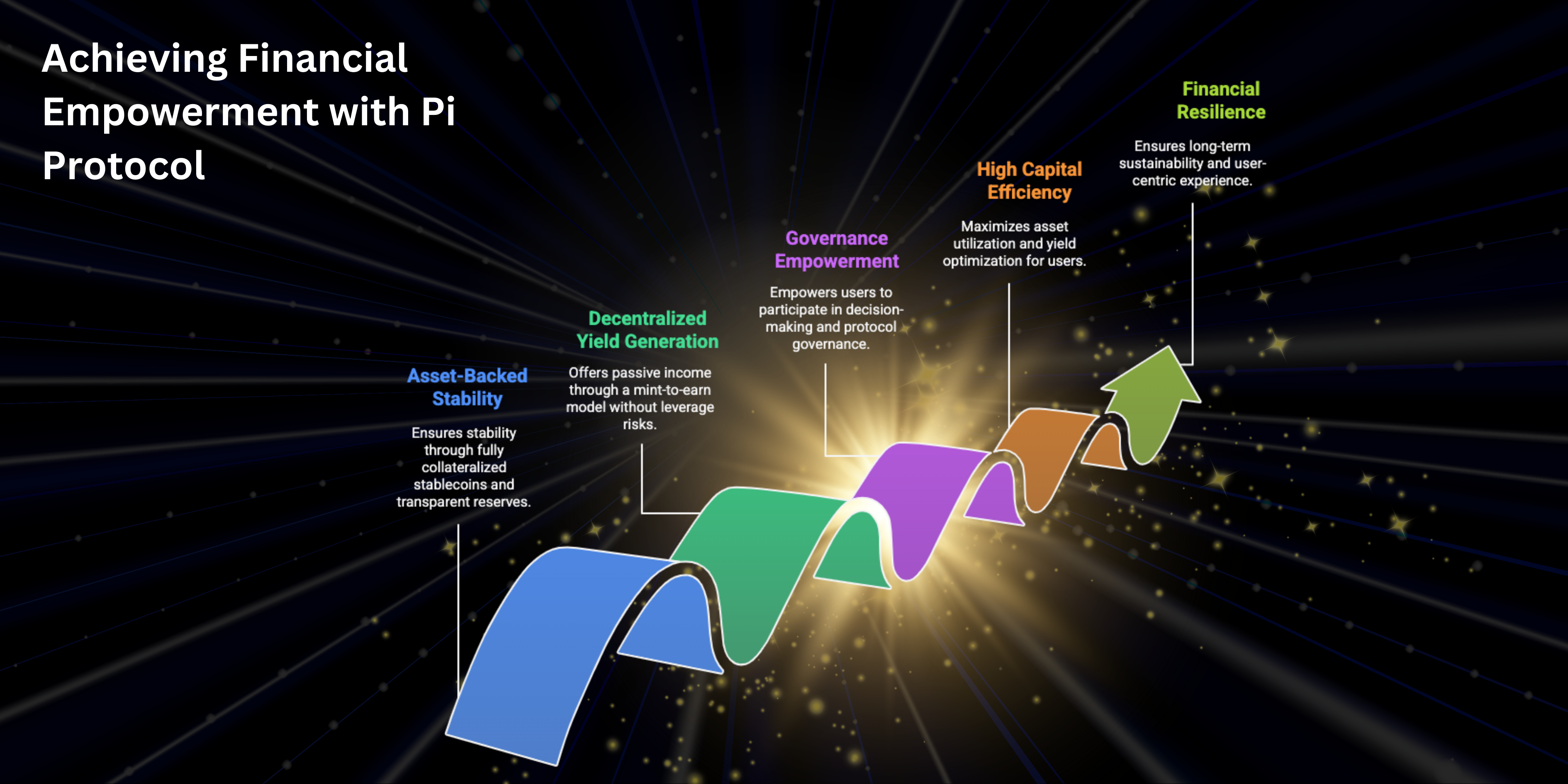Key Features & Benefits of Pi Protocol

Pi Protocol offers a comprehensive set of features designed to ensure stability, transparency, and accessibility within the decentralized finance (DeFi) ecosystem. By leveraging real-world asset (RWA) tokenization, the protocol creates a robust and sustainable financial infrastructure. Below is an expanded overview of its key features and the benefits users can experience:
1. Asset-Backed Stability
- Fully Collateralized Stablecoins: Pi Protocol ensures that every USP stablecoin is backed by real-world assets such as U.S. Treasury Bills, Insurance Industry Assets (IIAs), and private credit instruments.
- Transparency and Security: All collateral is tokenized and stored on the blockchain, providing transparent, verifiable proof of reserves.
- Market Resilience: The over-collateralization model safeguards against market volatility, maintaining the $1 peg of USP.
- Risk Management: A robust liquidation mechanism is in place to protect against collateral devaluation, ensuring the system remains solvent.
2. Decentralized Yield Generation
- Passive Income Opportunities: Users can earn yield through the protocol’s Mint-to-Earn model by holding USI tokens, which generate returns from the performance of underlying RWAs.
- No Leverage Required: Unlike traditional DeFi platforms, Pi Protocol eliminates the need for looping or leverage, offering direct yield redistribution without the associated risks.
- Real-World Returns: The protocol sources yield from stable, established financial markets, ensuring reliable and predictable income streams.
- Flexible Reinvestment: Users can reinvest USP and USI tokens to further compound their earnings without introducing additional capital risk.
3. Governance Empowerment
- Community-Driven Decisions: Through the USPi governance token, users actively participate in shaping the protocol's future. Token holders vote on key proposals, including collateral additions, fee adjustments, and protocol upgrades.
- Transparent Governance: All decisions and proposals are recorded on the blockchain, ensuring transparency and accountability.
- Incentivized Participation: Users earn additional rewards for contributing to governance activities, fostering an engaged and responsible community.
- Decentralized Control: By placing decision-making power in the hands of token holders, Pi Protocol remains aligned with the interests of its community.
4. High Capital Efficiency
- Maximized Asset Utilization: Users can unlock liquidity by minting USP stablecoins against their tokenized real-world assets while simultaneously earning yield through USI tokens.
- Dual Token Model: USP provides stability as a dollar-pegged stablecoin, while USI offers a yield-generating opportunity, allowing users to balance their portfolios.
- Flexible Collateral Management: The protocol supports a wide range of tokenized RWAs, giving users the flexibility to select assets that align with their financial goals.
- Yield Optimization: Users can optimize returns through yield distribution strategies, compounding earnings without additional investment.
Additional Benefits
- Security and Compliance: The platform undergoes regular audits by leading blockchain security firms to ensure the integrity of smart contracts.
- Cross-Chain Interoperability: Future plans include expanding across multiple blockchain networks, providing seamless access to users from different ecosystems.
- Sustainable Growth: By reinvesting a portion of protocol fees into the Treasury Reserve and Loss Reserve Pool, Pi Protocol maintains financial resilience and long-term sustainability.
- User-Centric Experience: With a streamlined interface, educational resources, and dedicated customer support, Pi Protocol ensures accessibility for both novice and experienced users.
Through its innovative features and user-centric approach, Pi Protocol offers a robust platform for stablecoin issuance, yield generation, and decentralized governance. This comprehensive financial ecosystem empowers users to achieve financial growth while contributing to the protocol’s long-term success.